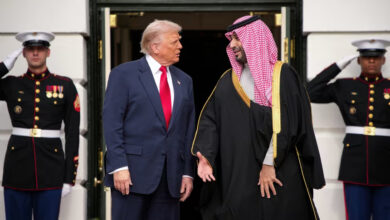
The Iran-aligned Houthi movement fought on Saturday to keep a Saudi-led coalition from taking full control of the airport in the port city of Hodeidah, in an offensive the U.N. says could trigger a famine imperiling millions of lives.
The alliance, led in the Hodeidah assault by the United Arab Emirates, is attempting to capture the airport in the well-defended city and push the Houthis out of their sole Red Sea port, in the biggest battle of the war.
“Death and poverty are all around us. We are scared to leave our homes after the fighting reached the airport,” said Abdelqader, a resident who used to work at a cement plant. “No work, no salary, we are just waiting for God’s mercy.”
Ground troops – which include United Arab Emirates forces, Sudanese and Yemenis from various factions – have surrounded the main airport compound but have not seized it, a source in the coalition-allied Yemeni military and residents said.
“We need some time to make sure there are no gunmen, mines or explosive in the building,” the military source said. The military’s media office said technical teams were de-mining the surrounding area.
Martin Griffiths, the U.N. special envoy to Yemen, arrived in the Houthi-held capital Sanaa as fears grew that fighting will severe the only lifeline to the vast majority of Yemenis.
The battle for Hodeidah could have ramifications far beyond the densely-populated city of 600,000. Yemen’s conflict is part of a regional proxy war between Saudi Arabia and Iran.
President Donald Trump’s withdrawal from the nuclear deal and his embrace of nuclear state North Korea have added to Iran’s isolation and put pressure on the Islamic Republic to preserve its interests in Yemen and other Arab states.
Fighting led to the closure of the northern entrance of the western city Hodeidah, which leads to Sanaa, blocking a key exit out of the city and making it harder to transport goods from the country’s largest port to mountainous regions.
Aly Omar and his family spent three days trapped in the Manzar neighborhood abutting the airport as fighting raged.




